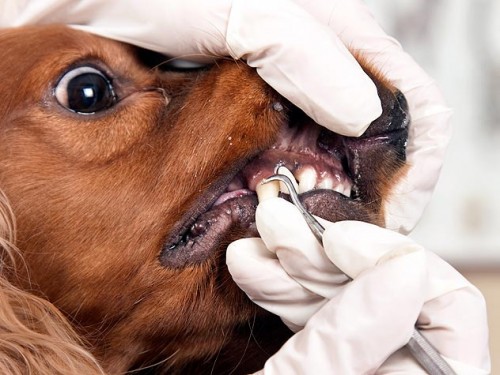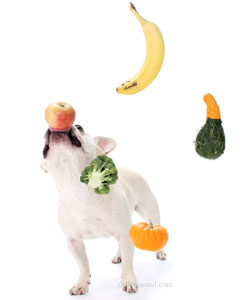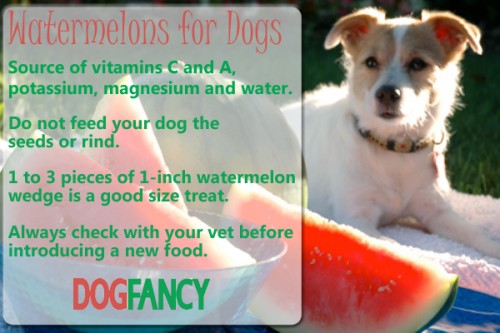Is There Such Thing As Dog Life Insurance?
It’s a Dog’s Life (Insurance)
It will take some digging and research, but it is possible to find life insurance for your dog. Traditional insurance companies, like the one your life or homeowner’s policy is through, usually don’t carry policies on dogs, even if they’re purebred. There are companies that specialize in pet insurance, however, and they’re the ones that can provide the coverage you’re looking for.
Who Should Get It
People who get life insurance for their dogs typically have expensive purebred pooches. Not all of them are show dogs, but many are, making insurance a common-sense issue. And because of the cost of a specially trained service dog, people who have these types of dogs sometimes choose to insure them, too.
Things to Consider
Life insurance for dogs doesn’t work exactly like life insurance for humans. You’ll have to shop around and find out what different policies cover and how they determine the payout. Some policies are written for accidental death only, and some will pay for costs like final veterinary expenses, euthanasia, cremation or burial. One insurance company might calculate the payout based on the market value of the dog at the time of his death, while another will base it on the price you paid for your dog. Ask about age cut-offs, too. Some insurance companies won’t insure dogs over a certain age and will even drop insurance once a dog reaches 10 or 11 years.
Other Dog Insurance
If life insurance on your pooch isn’t practical, consider getting help with healthcare to improve the quality of his life and possibly extend it. If you haven’t looked into it before, you might be surprised at the number of companies that offer health insurance for pets. Like your own health insurance, there are usually different levels of coverage ranging from wellness plans to accident coverage. It may not insure the life of your dog, but it can help defray the costs of medical treatment — which may end up literally being a life and death issue.
How Does Losing Molars Affect a Dog’s Health?
Your pooch can’t use his molars to grind her food because his jaw doesn’t move from side to side. Instead, he uses his premolars and molars — powered by his strong jaws — for chewing large pieces of food into smaller bits. If your dog looses these teeth, he could have difficulty chewing larger pieces of food, which may mean he’ll need a softer diet to ensure he’s getting proper nutrition.
Dental Health Concerns
If your dog can eat only soft foods due to molar loss, he may be at a higher risk for tooth decay, plaque buildup and periodontal disease. Without the tooth-cleansing benefits from crunchy foods, your dog’s oral health will depend on your efforts, and those of your vet, to help him keep his teeth clean.
Dog Oral Health and Care
The good news is that cavities are rare in dogs. The really bad news is that more than 80 percent of dogs over the age of three have gum disease, and among dogs adopted from shelters and rescue groups the percentage is closer to one hundred.

If he has other problems that need attention, they could be addressed at the same time. Although relatively expensive, regular professional dental care will make your dog feel better and keep his breath more pleasant for you to be near. Most important, good dental hygiene may prolong your dog’s life, because infected gums release bacteria into the bloodstream that can attack organs throughout the body.
Teeth cleaning is done under general anesthesia to give your vet free access to your dog’s mouth. Your vet, or her assistant, will remove tartar and plaque, and then polish your dog’s teeth. She will check for loose or damaged teeth, which may need to be removed or repaired, and for other signs of trouble. Different dogs need their teeth cleaned with varying frequencies, so be sure to talk to your vet about this.
There’s more to doggy dental care than vet visits. Between professional cleanings, bacteria cluster along your dog’s gum line. The bacteria form plaque, which hardens into tartar (calculus) if it’s not removed.
Tartar irritates the gums, causing gingivitis and periodontal (gum) disease characterized by abscesses, infections, and tooth and bone loss. To prevent or slow this destructive process, you need to brush your dog’s teeth.
Ideally, you should brush them every day, but every two or three days will go a long way toward preventing gum disease. Use toothpaste made for dogs — toothpaste for people can make your dog sick if he swallows it — and apply it with a brush designed for dogs, or a finger brush, or a small disposable dental sponge, whichever you find easiest.
Keep an eye out for signs of oral problems, including red, puffy gums; sudden or prolonged and copious drooling; swelling or lumps; ulcers and sores on the lips, gums, tongue, or other oral tissues; tenderness around the mouth; damaged teeth or tissues; inability to eat, or obvious discomfort when doing so; and foul breath. The sooner you catch a problem and bring it to your vet’s attention, the better for your dog and, probably, your wallet.
In addition to a good dental care regimen, you can help keep your dog’s mouth and teeth healthy by feeding him high-quality food, and by providing him with safe chew toys that help clean his teeth and gums.
The more you can do to remove plaque and tartar from your dog’s teeth between veterinary visits, the less frequently your dog will need to undergo a veterinary dental treatment. Since the procedure involves anesthesia — which is never without some risk — and can be costly, it’s in your and your dog’s best interests to follow a regular dental health regime at home.
Fruits for Dogs

Feed fruits to your dog as a small training treat or stuff your dog’s favorite treat stuffer toy with some peanut butter and fruit for a great and healthy occupier.
Tips for Feeding Fruit to Dogs
Always talk to your veterinarian about any treats you feed your dog, including fruit.
Give your dog small portions of fruit only, especially the first time feeding them to your dog. Even though fruit is good for him, fruit is not calorie free. Also, you don’t know if your dog will have an allergic or other adverse reaction, such as gas or an upset stomach.
Clean fruit thoroughly before offering it to your dog.
If you can, introduce small portions of fruit to your dog when he is young. He may be more likely to try it and like it.
Some dogs don’t like raw fruit. Try mashing it into their food or adding it as an ingredient when you make homemade dog treats. You can also use fruit juice, but make sure it is 100 percent fruit juice and not added sugars.
Avoid feeding your dog any type of seeds or pits. Although not all seeds are known to cause problems, it is better to be safe than sorry. What is known to be problematic or toxic are apple seeds, apricot pits, nectarine pits, plum pits, cherry pits and peach pits.
Check out this list of 13 fruits (and melons) for dogs and their benefits to get you started.
Apples: Source for potassium, fiber, phytonutrients, flavonoids, vitamin C. Note: Do not give dogs the core or the seeds, which contain arsenic. (Half of an apple slice is a good size treat.)
Bananas: Source of potassium and carbohydrates. (1 inch is a good size treat.)
Blackberries: Source of antioxidants (anthocyanins), polyphenols, tannin, fiber, manganese, folate, omega-3. High in vitamins C, K, A and E. (2 or 3 blackberries is a good size treat.)
Blueberries: Source of antioxidants, selenium, zinc and iron. High in vitamins C, E, A and B complex. (2 or 3 blueberries is a good size treat.) Cantaloupe: Source for vitamins A, B complex, C, plus fiber, beta-carotene, potassium, magnesium, thiamine, niacin, pantothenic acid and folic acid. (1 inch of cantaloupe wedge is a good size treat.)
Cranberries: Source for vitamin C, fiber and manganese. Helps fight against urinary tract infections, plus balances acid-base in dog’s body. (2 tablespoons of stewed cranberries added to dog’s food is good size portion. Note: To stew cranberries, put them in a saucepan with water, cover and cook until tender. Put them through a sieve and add to dog food.)
Kiwis: Source of fiber, potassium and high in vitamin C. (A half a slice or one slice of kiwi is a good size treat.)
Oranges: Source for fiber, potassium, calcium, folic acid, iron, flavonoids, phytonutrients, vitamins A, C, B1 and B6. (Half of a segment is a good size treat. May cause stomach upset if fed in too big a portion. Remove the rind and any seeds.) Do no feed your dog any part of the orange tree—see below.
Pears: Source for fiber, folic acid, niacin, phosphorus, potassium, copper, pectin and vitamins A, C, E, B1 and B2. (1 or 2 pear cubes is a good size treat.)
Pumpkin: Source for fiber, beta-carotene, alpha-carotene, zinc, iron, potassium and Vitamin A. Note: Although you can feed your dog pumpkin seeds, most recommend feeding them to dogs unsalted, roasted and then grounded. Do not feed your dog any other part of the pumpkin due to the small, sharp hairs on the pumpkin stem and leaves. (1 to 3 tablespoons of pureed pumpkin [not pumpkin pie mix] is a good size treat.) Learn more>>
Raspberries: Source of dietary fiber, antioxidants, potassium, manganese, copper, iron, magnesium. Rich in vitamin C, K and B-complex. (2 or 3 raspberries is a good size treat.)
Strawberries: Source for fiber, potassium, magnesium, iodine, folic acid, omega-3 fats, vitamins C, K, B1 and B6. (A half or 1 strawberry is a good size treat.)
Watermelon: Source of vitamins C and A, potassium, magnesium and water. Do not feed your dog the seeds or rind. (1 to 3 pieces of 1-inch watermelon wedge is a good size treat.)

Although some fruits in small portions can be good for your dog (unless your dog is allergic), never offer your dog the following. If your dog accidently eats the below fruit, contact your veterinarian immediately.
Grapes or Raisins: They have caused many cases of poisoning when ingested by dogs.
Avocados: They could cause gastrointestinal irritation.
Figs: Figs have caused allergic reactions in some dogs. Also, the fig is grown on the Ficus tree (Ficus benjamina), which causes skin inflammation if your dog comes into contact with it. Ficus plants or trees also cause diarrhea and vomiting if your dog ingests them.
Orange tree: The orange tree (Citrus sinensis) is toxic to dogs, cats and horses due to its psoralens and essential oils. You don’t want your pet to ingest the seeds, peel, leaves or stem of this tree or fruit. Symptoms of orange tree poisoning are depression, diarrhea and vomiting.
Lemon tree: The lemon tree (Citrus limonia) is toxic to dogs, cats and horses due to its psoralens and essential oils. You don’t want your pet to ingest the seeds, peel, leaves or stem of this tree. Symptoms of lemon plant poisoning are depression, diarrhea and vomiting.
Adoption Vs. Pets Purchased From Pet Stores
Adding a pet to a family is an important decision. Most people obtain pets by purchasing them from pet stores or adopting them through animal shelters or rescue agencies. Each method has advantages and disadvantages. Have a question? Get an answer from a Vet now!
Adoption Advantages
People can adopt pets from animal shelters and rescue organizations. Both offer extensive pre- and post- adoption counseling and education, charge lower fees than pet stores, and often include extras like free neutering, de-worming, vaccinations and a post-adoption physical from a veterinarian.
Pet Store Advantages
It’s quicker and easier to obtain a pet from a store because you will not need to be screened or evaluated. Young animals, designer pets and purebreds are readily available at pet stores. The store can give you information and paperwork to register your pet. Some stores have health guarantees and pet-return policies.
Adoption Issues
Your pet choice is limited to the shelter’s current inventory, which may not include young animals or purebreds. You may need to pass an evaluation and counselor interview. A pet’s unknown parentage and past environment may lead to genetic or personality problems later.
Pet Store Issues
Most stores obtain pets from high-volume commercial breeders who provide inadequate exercise, nutrition and health care for their pets. Animals raised in these conditions often develop physical, mental and behavioral problems. Pets at stores can be expensive; their fee does not include vaccinations, de-worming or a post-purchase veterinarian visit.
Do Your Homework
Investigate before visiting a pet store or shelter. Online search engines like Petfinder.com will help you locate shelters and available pets. Ask for references from friends and family who own pets. Get recommendations from a trusted veterinarian. Find out about a store or shelter by checking with the Better Business Bureau and state licensing agency.
Easiest Age for Dog Training
Getting Started
By the time a puppy is 10 to 12 weeks old he’s ready and eager to absorb basic obedience training and to learn simple tricks. This is a good time to teach him to sit, shake hands and to come when you call him. It’s also the ideal age for you to take him to a good puppy class so he can develop social skills and learn to get along with other people and dogs. Your dog will continue to learn easily throughout his entire first year, and once he has the idea, you’ll be able to give him more advanced training as he gets older.
How Do I Train My New Dog to Stop Chasing My Cats?
THE FOLLOWING IS AN EXCERPT FROM PETFINDER.COM’S FURKEEPS KICKOFF LIVE FACEBOOK Q&A.
Q: We have two adult cats (ages 13 and 4 — both adopted) and recently adopted an adult dog from our local shelter who seems to be about 2-3 years old. The dog just can’t seem to break that dog/cat stereotype and loves to chase the cats! We have the cats in our bedroom behind a gate but ultimately would love to have them all together. Can’t we all just get along?
A: It is not unusual for a dog to want to chase another moving animal, no matter what kind it is. A basic obedience class will be your best bet, or a couple of in-home sessions with a private trainer. Your dog needs to learn to sit and down or “emergency drop” on cue, as well as “leave it” (break eye contact with) for the safety and comfort of your cats.

Also remember that until you really know who this dog is, do not leave the three of them alone in the same space together. The dog’s arousal could go over the top to aggression and you don’t want to come home to a deadly scenario.
I am assuming that your dog is just chasing in a playful manner and not trying to grab, shake and kill. If the latter is the case, you have a very dangerous situation on your hands. You then definitely need to work with an experienced professional trainer or behaviorist, and even then you may have no other choice but to re-home the dog into a cat-free environment.





